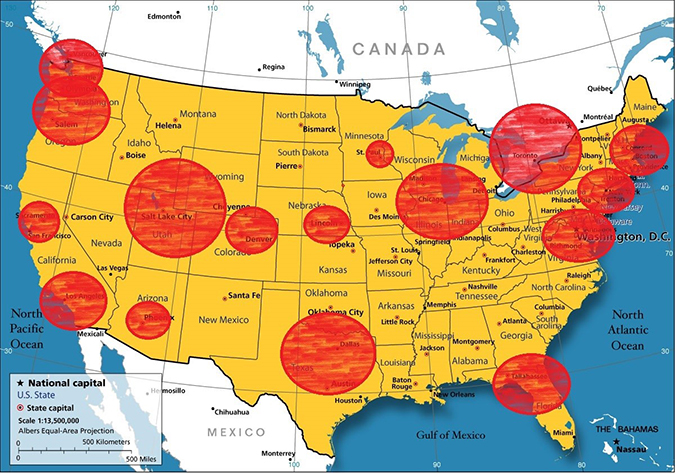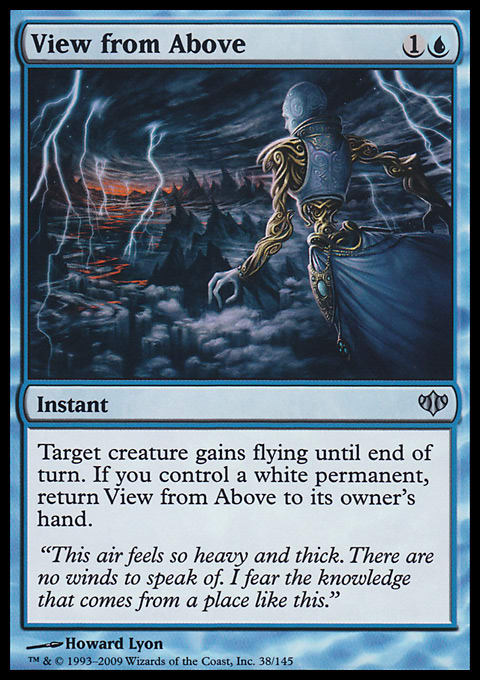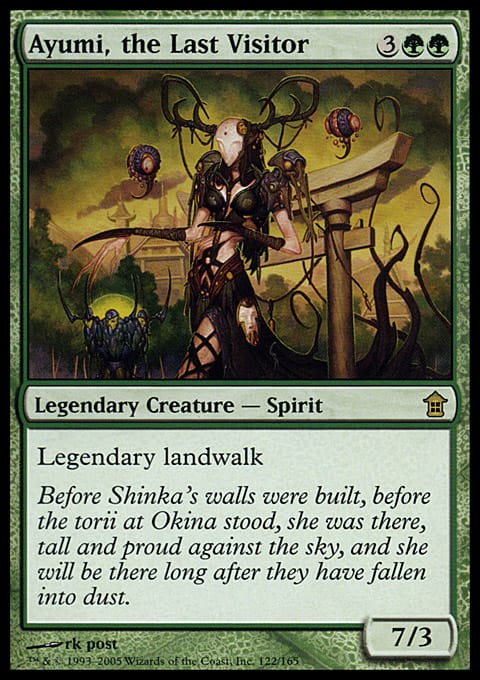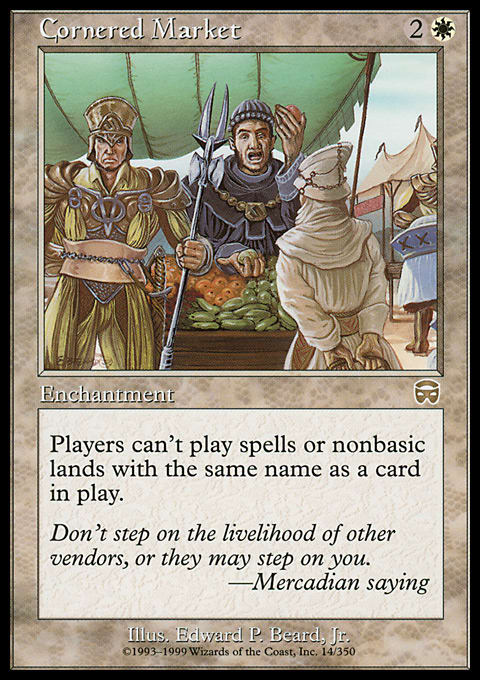I have been seeing Grand Prix events changing on a continual basis but as of late, and there is a radical new definition of what a GP has become: a mini-convention.
Grand Prix events have soared over three and four thousand players. Now players can look forward to large-scale events and side events from the Standard to the wacky and team functions galore. I’ve been asked to help with panels, and seminars with Q&A time is becoming ever more normal. Content now has crept into Thursday with no one really seeming to notice. There is a new massive demand on time, and these changes won’t be leaving soon. Artists still have a place at large-scale Magic events, and at some, there are a larger numbers of artists attending. These changes have also affected artists, both financially and in a practical sense.
I’ve now received two artist solicitations that tournament organizers have sent, stating a scaling back of artists benefits, from free dinners being eliminated to no longer covering airfare and first-come, first-served hotel benefits. American organizers have been cutting benefits from artists, whereas Japanese organizers have been adding more American artists to their events. That’s the market at work. Artists are not necessarily getting the short end of the stick, but rather, artists are being assessed.
I’m trying to see the perspectives of one issue that will become clear: Should artists be guests of honor at Grand Prix events or are artists really just vendors sitting in a different area? Should artists be at every Grand Prix? If they disappeared at one, to save costs, would attendance be greatly diminished?
…or are artists really just vendors sitting in a different area?
The role of the artist at Magic’s largest events is being assessed, and we—as the consumer—haven’t noticed what is happening yet.
To assess their role, I’m trying to look at this from a practical perspective. I have a bias: I like artists. I like what they bring to events, and I want them to be as happy as possible. When artists are in a great mood at events, players have better experiences, and I gain enjoyment out of that. The ideal state is to have the tournament organizer be as profitable as possible and have the artists be as profitable as possible. This is not an either-or analysis, but rather, it’s a perception shift into the role of artists at our largest events. Let’s go.
Artists Should Be Guests
I’m a diehard Vorthos; I love flavorful interactions, and the artwork that sits on cards is the paramount reason I play and enjoy Magic. I like seeing artists, and I want to visit with them in person whenever I can. I want to touch sketches and see brushstrokes millimeters from my face. Obviously, I want my Grand Prix events to be fun in gameplay, but the main reason I attend any large Magic gathering is the artists. My local Friday Night Magic or Draft has a near-zero chance of bringing artists in currently, so I keep Grand Prix events as an extravaganza of Magic, a rare event of the Magic food pyramid of flavorful consumption.
When I arrive on site at a Grand Prix on that Friday, I try to gain a sense of the location, but also see an artist. That’s why I go. The specialness a Grand Prix encompasses is having artists as guests and has been like this since the 1990s. I wish I had the data, but I know a nonzero number of local players stop by a Grand Prix to get a signature of an artist at the very least. Artists drive attendance—that is established—and the ability for some artists to attend these events is being undermined.
Artists are special, and with a greater number of large-scale Magic events, a rotation of artists—some new, some established, and some wildcard, reclusive artists—add to the convention that Grand Prix events are becoming. Artists should be guests of honor because they add to the spectacle. It’s not a Grand Prix without artists, and the marginal cost to include three artists should be part of the cost of entry because the cost is so low and spread across thousands of people. The opportunity cost for one more artist increases dwell time in a convention hall, adding to sales; goodwill dramatically increases the chance for players to enter more side events. Side events, after all, are for a more casual crowd, who overlaps with the propensity for liking a signature from an artist.
Artists can boycott Grand Prix events if they haven’t had costs covered, but with thousands of Magic illustrations, a tournament organizer will always be able to find an artist who will do so for free. But they won’t be able to obtain the best artists for free. This is very, very important. Terese Nielsen and Donato Giancola aren’t going to show up to a random Grand Prix if they have to pay their own ways; let’s be honest here. And you know what? Those folks drive traffic to the event—oodles of it.
If artists are not to have covered costs, a crowding out will occur. Those artists who can be profitable will show up or artists who have the time will do so. That means a local artist will always be at your local Grand Prix because he or she is cheap—or is retired and that experience isn’t the promise of a spectacle. I like seeing the Big Pig at the Minnesota State Fair each year, but I do it out of tradition. My attendance isn’t affected if the pig is on his daily walk. I don’t foresee enjoying the day when my mind compares an artist experience to a nine-hundred-pound sleeping pig.
Artists Have to Be Vendors
While Grand Prix events are scaling up into four-thousand-player mini-conventions, events are becoming tighter, as bumping up to that larger venue space doesn’t net a proportionate increase in vendors, only costs. These massive events are also scaling upward in entry fees as well. Raising costs of entry by $15 but including an exclusive play mat makes players happy because they can often sell that play mat for $15 or more. Raising costs by $1 to $5 to accommodate artists seems like nothing, but not all players benefit from artists being there, and they will be vocal about that concern.
Grand Prix events are conventions, and therefore, they’re businesses. Every aspect included, while fun and however enjoyable, is created to create revenue, drive attendance, and profit the parent company. As soon as an aspect is disconnected to driving revenue, it is either reclassified to become profitable or it is dropped.
Have you noticed that Grand Prix events across the country have a lot of the same artists, over and over again? It’s not that they’re all being invited only from a short list, excluding your favorite artist who just never comes. That’s not how it works. It’s a large solicitation list, and those artists are opting into the events because they have found a way to have it become profitable. A ton of Magic artists would love to attend your Grand Prix in your town, but driving (or flying), covering your own way with all of your stuff, has incredible risk. Artists cannot afford to take chances that an art collector will buy an original or that people will pay them enough for commissions on site for a full three- or four-day weekend of work. This is what happened at Spectrum Live 1, the art convention in Kansas City. Many artists paid for exhibition space, and very few collectors showed up. That’s a different example, but if you’re an artist who didn’t make any Legacy-staple cards, signing up for a Vintage or Legacy event will squash any ambitious feeling you have about Magic events.
What hasn’t come yet is charging artists to attend a Grand Prix. If you can guarantee an artist that three thousand people will be at the event, months in advance, some artists will pay for spots, especially if they know they can and will be insanely profitable. Think of a Limited Grand Prix with artists who made cards in the set being played. That makes it easy to have a good to great weekend. But when you were crazy-relevant back in the 1990s or you were all over Kamigawa block but little elsewhere, you become gun-shy, and frankly, organizers may not want you there if people aren’t specifically coming to visit you or your booth and if the Grand Prix isn’t gaining attendance from your presence.
Lasting Ramification 1: Alterations
One thing that will have a lasting effect is that alterations are now being solidified as something artists must do at events. Without airfare, hotels, or food being covered, there is a hard number of how many prints or originals you, as an artist, need to sell. Predicting buying behavior is perception-based at best, and it’s a gut feeling at worst. What can be predicted, though, is altering cards.
If a full weekend’s costs balloon to $1,000 from airfare, hotel night stays for two or three nights, and food, that is legitimately $20 marker alterations fifty times to simply break even. Yes, play mat commissions and sales can all be conducted, but the sheer effect of picking away at the inherent costs of working thirty hours over three days has been proven to be effective.

Image via Mike Linnemann at Grand Prix Portland 2014
A longer-lasting effect is that, because of Grand Prix weekends becoming more convention and spectacle, artists are being asked to pay their own ways. Those who do agree to this have hard costs that need to be rapidly recovered on site in a more guaranteed way, which is altering and markering the cards. This has a long-term effect in that more Legacy and Vintage cards will be altered. There is a set number of Alpha cards. There is a set number of Power 9 cards as well. The long-term financial reality of unaltered cards is growing due to this aspect of tournament-organizer behavior and the incentive artists have to recoup costs.
Lasting Ramification 2: Crowding Out

One thing for sure is that if artists are to be vendors, travel will be minimal, and a Grand Prix’s location will be paramount to which artist you are to see. If you live in Los Angeles, Seattle, Chicago, or New York, good for you. The problem is that most Grand Prix events aren’t in the actual cities, but suburbs. If you find yourself in Lincoln, NE, the artists you will see will be on rotation. While Winona Nelson is fantastic, I doubt she will want to visit her family in Minnesota every time there is a Grand Prix. That also means that Minnesota will only be able to pull artists from neighboring states unless exceptions are made.
While this is a boon for Magic artists who have stepped away from the game, if you’re new or an up-and-coming artist in a non-ideal Grand Prix city, you’re just out of luck. This means that Dave Dorman, who lives in Illinois, is ideal for the new normal Grand Prix in Chicago because he can safely assume there will be thousands of people there. But at the same time, is it worth his time? Are three days of signing and altering really worth it? Will Ron Spears or Matt Wilson, amazing artists of Magic’s past, ever be invited to a Grand Prix outside their cities or states?
This brings me pause because the same folks will be hitting key cities over and over again. More importantly, if an artist can be a journeyman or journeywoman and find a way to be profitable, the specialness of meeting or seeing an artist is diminished because you just saw that artist last month, but he or she is willing to be a vendor and travel. Many artists, especially the established ones, will boycott Grand Prix events. It’s inevitable. They will still want to interact with their fans, but artists can and probably will contact stores directly, asking if they can have a table for free if a large, monthly event or prerelease is occurring nearby. After all, if being available will bring patronage and they will be altering either way, is it really worth it to spend three long days for a sustainable base of operations in the same city anyway? It’s a tradeoff, as any vendor will discuss, and the lasting effect is that the Grand Prix experience is worse. It’s still a carnival, but sticking around for that extra hour to win the large clown prize won’t really be worth it.
I’m not sure what players who grind out the game want, but without Wizards of the Coast being able to accommodate artists, and with the ability to bring in artists resting solely on the shoulders of tournament organizers, our idealized version of Grand Prix as spectacles may be waning. I say “our” because there’re a lot more casual Magic players than there are grinders.
This is a changing of the role of the artist, and no one has slowed down to examine the artist’s role in our largest tournaments. While artist incentives as guests diminish into what’s probably a zero-sum effort, will they still have places at Grand Prix events at all?
Sound off below or on Twitter: What do you think the future will be for artists and Grand Prix events, and what are possible amicable solutions?
-Mike






























